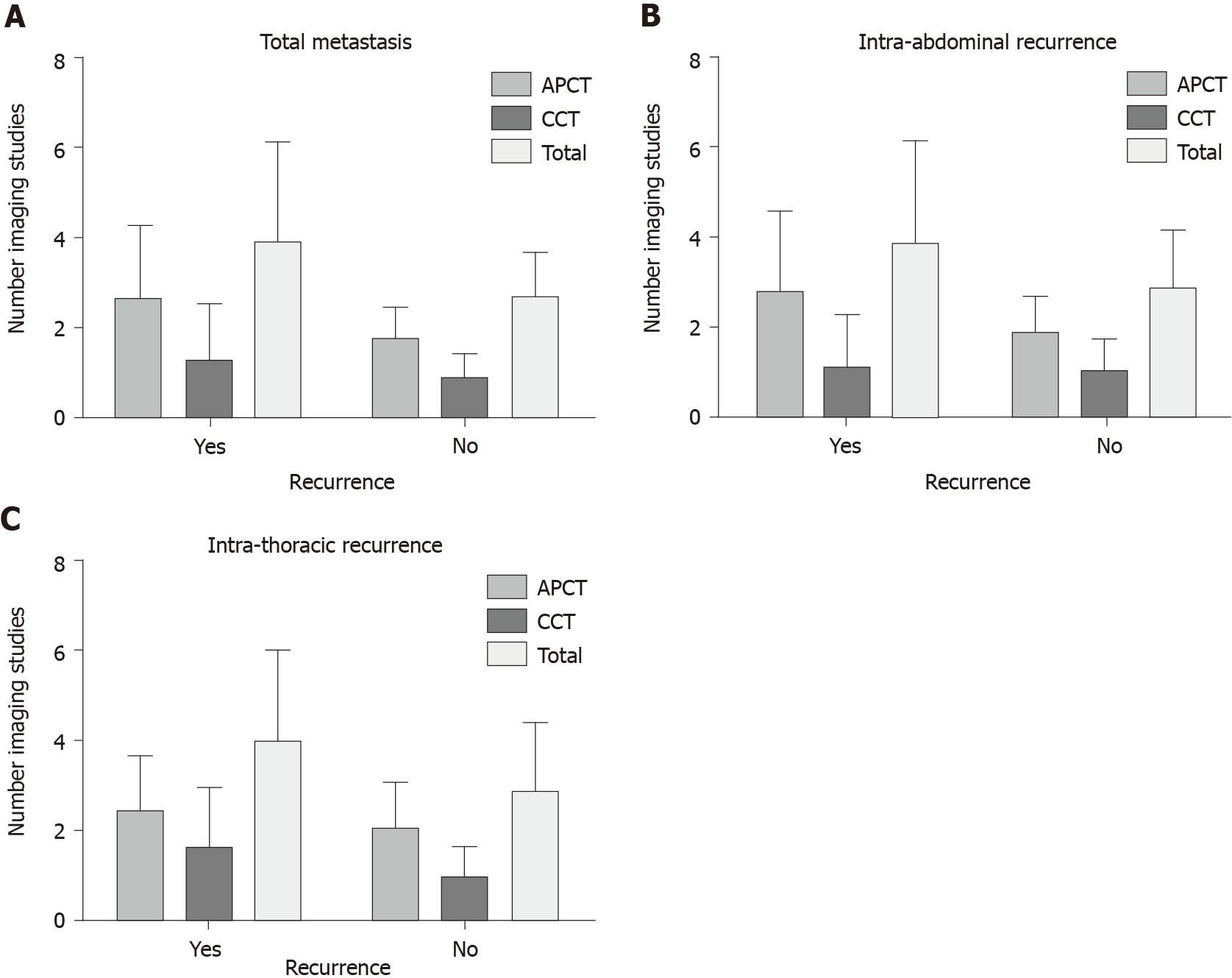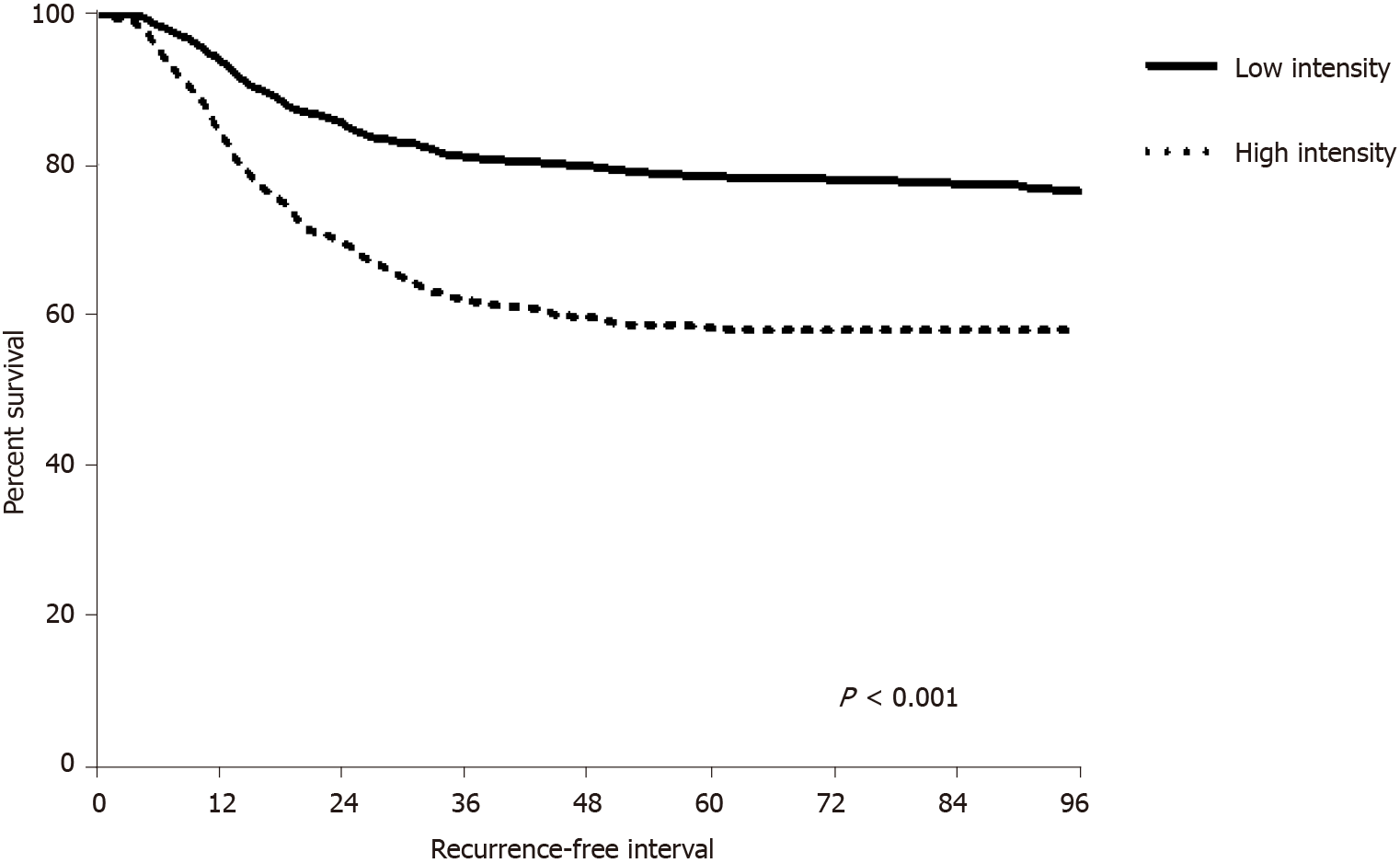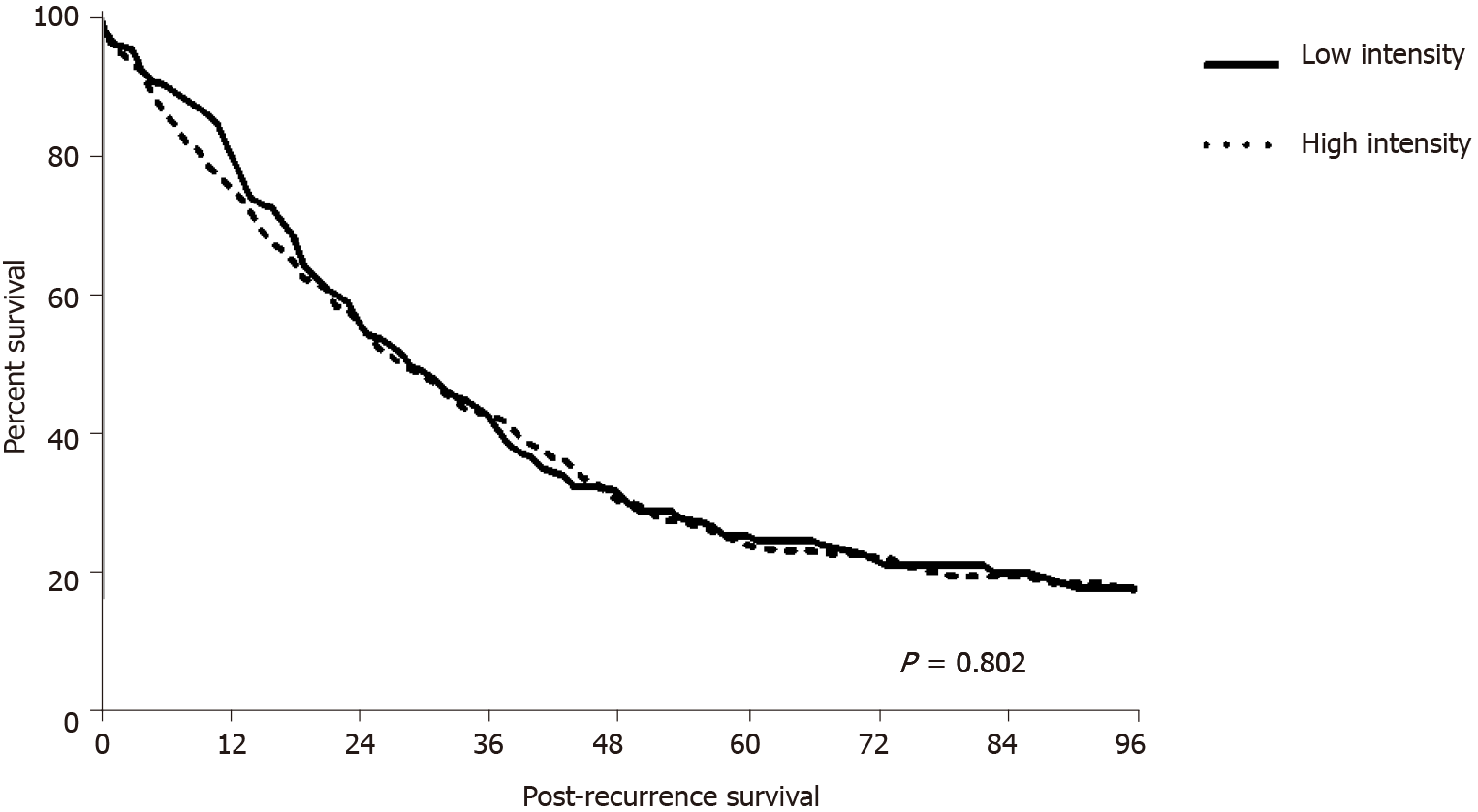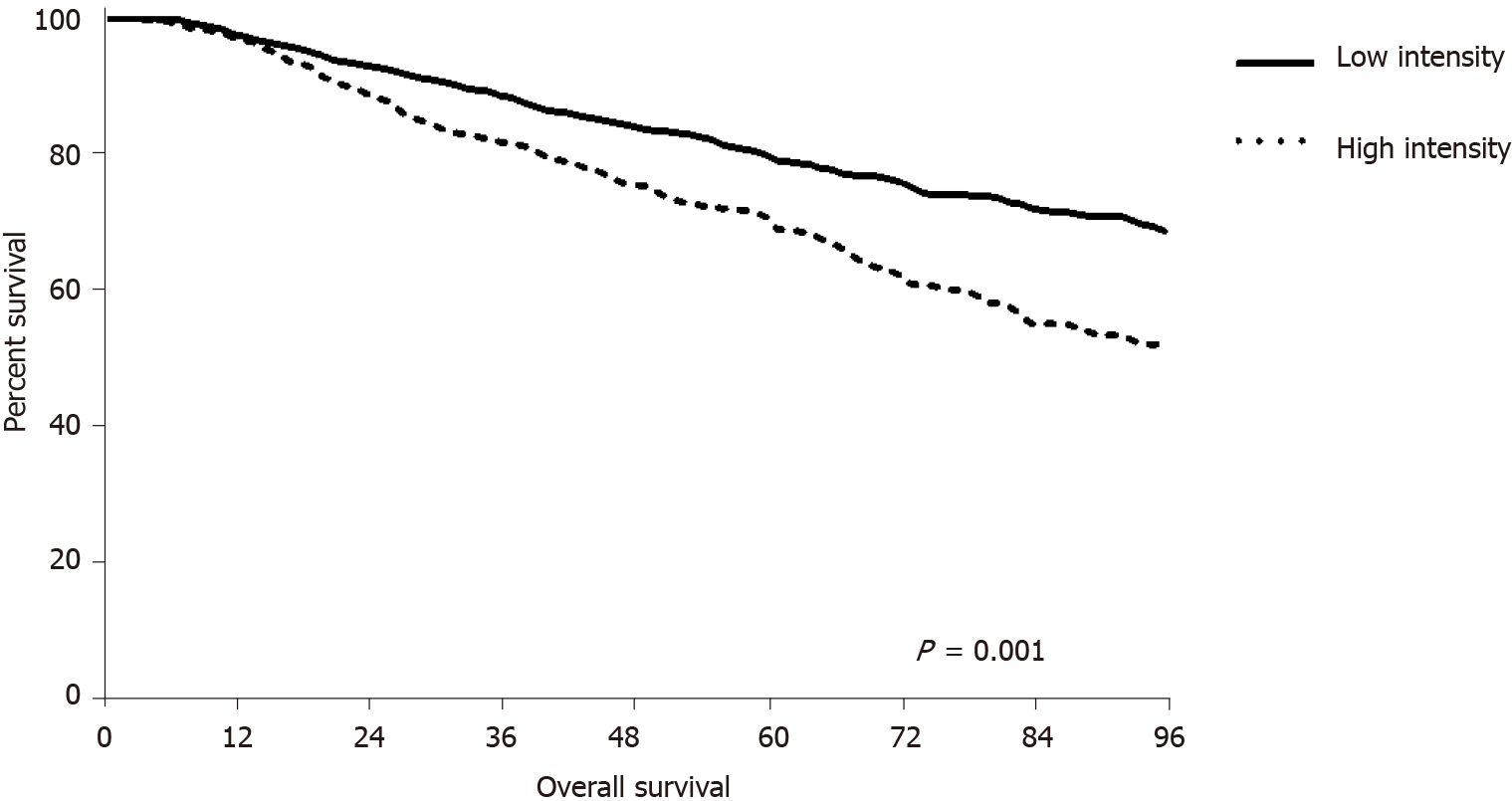Copyright
©The Author(s) 2021.
World J Gastrointest Surg. Sep 27, 2021; 13(9): 1012-1024
Published online Sep 27, 2021. doi: 10.4240/wjgs.v13.i9.1012
Published online Sep 27, 2021. doi: 10.4240/wjgs.v13.i9.1012
Figure 1 Number of imaging studies during surveillance period based on the development of recurrence.
A: Mean number of abdomino-pelvic computed tomography (APCT) and chest computed tomography (CCT) studies were higher in the recurrence group (APCT, 2.63 ± 1.64 vs 1.77 ± 0.66; CCT, 1.27 ± 1.24 vs 0.91 ± 0.49; P < 0.001, each); B: In patients with intra-abdominal recurrence, mean number of APCT studies were higher in the recurrence group (APCT, 2.75 ± 1.79 vs 1.85 ± 0.79, P < 0.001; CCT, 1.09 ± 1.13 vs 1.00 ± 0.71, P = 0.060); C: In patients with intra-thoracic recurrence, mean number of APCT and CCT studies were higher in the recurrence group (APCT, 2.41 ± 1.21 vs 1.97 ± 1.09; CCT, 1.58 ± 1.34 vs 0.93 ± 0.66; P < 0.001, each). APCT: Abdomino-pelvic computed tomography; CCT: Chest computed tomography.
Figure 2 Kaplan–Meier analyses of recurrence-free interval according to surveillance intensity.
Recurrence-free interval was significantly longer in low intensity group.
Figure 3 Kaplan–Meier analyses of post-recurrence survival according to surveillance intensity.
Surveillance intensity did not show difference in post-recurrence survival.
Figure 4 Kaplan–Meier analyses of overall survival according to surveillance intensity.
High intensity group had lower overall survival rate than low intensity group.
- Citation: Park MY, Park IJ, Ryu HS, Jung J, Kim M, Lim SB, Yu CS, Kim JC. Optimal postoperative surveillance strategies for stage III colorectal cancer. World J Gastrointest Surg 2021; 13(9): 1012-1024
- URL: https://www.wjgnet.com/1948-9366/full/v13/i9/1012.htm
- DOI: https://dx.doi.org/10.4240/wjgs.v13.i9.1012












